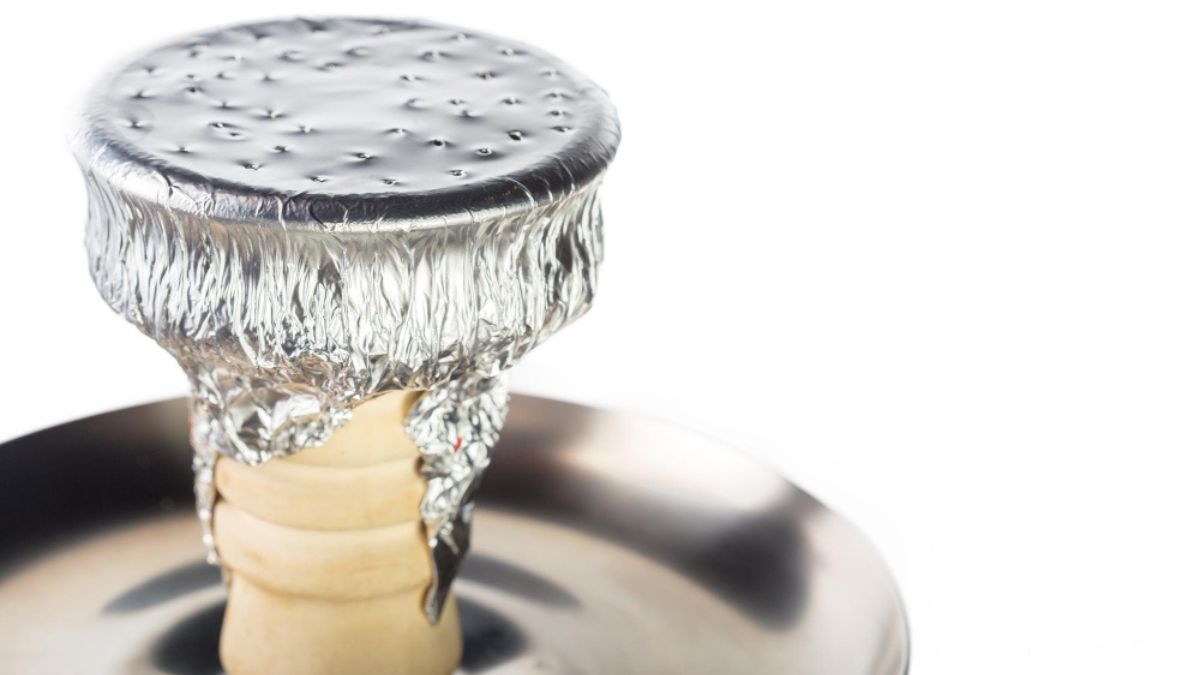Health
The Hidden Factors: Medical Conditions Behind Weight Gain

In the battle of the bulge, we often focus on the familiar culprits: overeating, sedentary lifestyles, and poor dietary choices. While these certainly play significant roles, there exists a realm of hidden factors contributing to weight gain that often evade our attention.
Medical conditions, ranging from hormonal imbalances to metabolic disorders, can significantly influence our body’s ability to maintain a healthy weight. In this article, we delve into the intricacies of these hidden factors, shedding light on the medical conditions behind weight gain.
Hypothyroidism: The Thyroid Factor
At the center of our metabolism lies the thyroid gland, responsible for regulating energy expenditure and metabolism. When the thyroid gland underperforms, a condition known as hypothyroidism ensues, leading to symptoms such as fatigue, cold intolerance, and weight gain.
This weight gain often occurs despite efforts to control diet and exercise due to the slowdown in metabolic processes. Understanding the impact of hypothyroidism is crucial, as it affects millions worldwide, particularly women.
Polycystic Ovary Syndrome (PCOS): Hormonal Havoc
PCOS, a common hormonal disorder among women of reproductive age, disrupts the balance of reproductive hormones, leading to irregular menstrual cycles, ovarian cysts, and infertility. Weight gain, particularly centralized around the abdomen, is a hallmark symptom of PCOS, driven by insulin resistance and elevated levels of male hormones (androgens).
Managing weight becomes a formidable challenge for those with PCOS, necessitating a multifaceted approach that addresses hormonal imbalances alongside lifestyle modifications.
Cushing’s Syndrome: Cortisol Overload
Excessive production of cortisol, often termed the stress hormone, characterizes Cushing’s syndrome. This may result from prolonged use of corticosteroid medications or overactivity of the adrenal glands. The hallmark physical features of Cushing’s syndrome include weight gain, particularly in the face, upper back (buffalo hump), and abdomen (central obesity).
Elevated cortisol levels promote fat accumulation, particularly in visceral depots, contributing to metabolic disturbances and insulin resistance. Recognizing Cushing’s syndrome amidst its myriad symptoms is paramount for timely intervention and management.
Insulin Resistance and Diabetes: Glucose Metabolism Gone Awry
Insulin, a hormone produced by the pancreas, plays a pivotal role in glucose metabolism. Insulin resistance, a condition where cells become less responsive to insulin, is a precursor to type 2 diabetes. In insulin resistance, the body compensates by producing more insulin, leading to elevated insulin levels in the bloodstream.
Insulin, known for its role in promoting fat storage, fosters weight gain, particularly around the abdomen. Uncontrolled diabetes exacerbates this phenomenon, further complicating weight management efforts.
Hypothalamic Disorders: The Brain’s Influence
The hypothalamus, a region of the brain involved in regulating appetite and energy expenditure, can be disrupted by various conditions, including tumors, trauma, or inflammation. Hypothalamic dysfunction often leads to alterations in appetite regulation, resulting in either increased or decreased food intake.
Some individuals may experience hyperphagia, an abnormal increase in appetite, leading to weight gain despite efforts to restrict calorie intake. Understanding the intricate interplay between the brain and body is crucial for managing weight in those with hypothalamic disorders.
Medication Side Effects: Unintended Consequences
Many medications prescribed for various medical conditions may inadvertently contribute to weight gain as a side effect. Antidepressants, antipsychotics, corticosteroids, and certain antiepileptic drugs are notorious for their potential to promote weight gain.
Mechanisms underlying medication-induced weight gain vary but may involve alterations in appetite, metabolism, or energy balance. Healthcare providers need to weigh the risks and benefits of medications while considering their potential impact on weight and metabolic health.
Genetic Predisposition: The Influence of DNA
While lifestyle factors undoubtedly play a significant role in weight management, genetic predisposition also exerts a considerable influence. Certain genetic variants may predispose individuals to obesity or metabolic disorders, making weight regulation more challenging.
Understanding one’s genetic makeup can provide valuable insights into personalized approaches to weight management, emphasizing the importance of a tailored, holistic approach that considers both genetic and environmental factors.
In Conclusion
Weight gain is frequently linked to lifestyle choices, yet it’s crucial to acknowledge the impact of medical conditions. From hormonal imbalances to metabolic dysregulation, numerous hidden factors can impede efforts to manage weight effectively, highlighting the need for a thorough understanding and strategy. Identifying the underlying medical conditions contributing to weight gain enables individuals to embark on a path toward improved health with tailored interventions, informed choices, and comprehensive support.
Let’s not underestimate these hidden factors—let’s uncover them together and pave the way to a healthier, more balanced life. If you’re in Salt Lake City, consider reaching out to a weight loss center for personalized assistance on your journey.
Health
Exploring iofbodies .com: Your Ultimate Resource for Body Positivity

In a world where societal standards often dictate how we should look and feel, iofbodies .com emerges as a refreshing sanctuary for body positivity. This vibrant platform invites you to embark on a journey of self-love and acceptance, regardless of your shape or size. With an array of resources designed to uplift and inspire, iofbodies.com is more than just a website; it’s a community committed to celebrating diversity in all its forms. Whether you’re seeking informative articles, engaging podcasts, or supportive forums, there’s something here for everyone looking to embrace their true selves. Let’s dive deeper into what makes this resource a vital part of the body positivity movement.
Body Positivity 101: What is it and Why is it Important?
Body positivity is more than a trend; it’s a movement. It encourages everyone to embrace their bodies, regardless of size, shape, or appearance. This concept promotes self-acceptance and challenges societal beauty standards that often dictate how we view ourselves.
Understanding body positivity allows individuals to break free from harmful stereotypes and unrealistic expectations. It fosters a culture where every body type is celebrated rather than criticized.
The importance of this movement cannot be overstated. By advocating for acceptance and love towards our bodies, we can improve mental health outcomes. People often feel less pressure to conform when they see diverse representations of beauty.
Moreover, body positivity empowers individuals to seek healthier lifestyles—not as a means of fitting into certain molds but out of genuine self-care and respect for one’s unique form.
Features and Resources on iofbodies.com
iofbodies .com offers a treasure trove of features designed to empower individuals on their body positivity journey. One standout aspect is the extensive library of articles that delve into various topics, from self-acceptance tips to tackling societal beauty standards.
The site also hosts an array of engaging videos and podcasts. These multimedia resources provide fresh perspectives and expert insights, making it easy for visitors to absorb information at their own pace.
Community forums create safe spaces for users to share experiences and support one another. This sense of belonging fosters connection among those navigating similar challenges.
Additionally, iofbodies.com showcases interviews with experts in psychology, nutrition, and wellness. Their advice can be instrumental in fostering a positive relationship with one’s body while encouraging healthy habits without judgment.
A. Articles, Videos, and Podcasts
At iofbodies .com, you’ll discover an impressive collection of articles that delve into various aspects of body positivity. These engaging reads cover everything from personal stories to practical tips on embracing your unique self.
The site also boasts a range of videos that make the journey toward body acceptance more accessible and relatable. Whether you prefer inspiring talks or informative visual content, there’s something for everyone.
Podcasts are another highlight, featuring conversations with advocates and experts in the field. Listening to these discussions can spark motivation and provide deeper insights into the nuances of body image issues.
These multimedia resources create a vibrant tapestry of knowledge and support. Each format offers its way to connect with ideas and experiences that resonate deeply with many individuals on their paths to self-love.
B. Community Forums and Support Groups
The community forums and support groups on iofbodies .com create a welcoming space for individuals to connect. Here, you can share experiences, seek advice, or simply find solidarity in your journey toward body positivity.
Members engage in heartfelt discussions about their challenges and triumphs. This exchange fosters understanding and empathy among participants. It’s refreshing to know you’re not alone in your struggles.
Support groups offer structured conversations led by moderators who guide discussions with compassion. These sessions allow members to dive deep into sensitive topics while feeling supported.
Whether you’re looking for motivation or need someone to listen, these forums provide that essential lifeline. Feeling comfortable sharing personal stories helps build trust within the community.
With such diverse perspectives available, it’s empowering to learn from others’ journeys while contributing your own story as well. The sense of belonging is palpable here.
C. Expert Interviews and Advice
At iofbodies .com, expert insights are just a click away. The platform features interviews with leading figures in the body positivity movement. These conversations delve deep into topics that matter, offering fresh perspectives on self-acceptance and mental health.
Listeners can gain valuable advice from psychologists, nutritionists, and activists who share their journeys and knowledge. Each interview aims to empower individuals by providing practical tips for embracing one’s body.
The content is designed not only to inform but also to inspire action. With each dialogue, you’ll discover new ways to challenge societal norms around beauty standards.
These experts shed light on common struggles related to body image while reinforcing the importance of community support. Their candid discussions create a safe space for listeners seeking guidance on their path to self-love.
Real-Life Stories of Body Positivity
Real-life stories of body positivity can be incredibly inspiring. They resonate because they remind us that we are not alone in our struggles with self-image.
Take Sarah, for example. After years of battling an eating disorder, she found solace in embracing her curves. She now shares her journey on social media, encouraging others to celebrate their bodies just as they are.
Then there’s Jamal, who faced bullying for his weight throughout school. Instead of letting it define him, he became a fitness coach focused on self-love and acceptance. His mission is to help others find strength in their uniqueness.
These narratives highlight resilience and authenticity. Each story adds a new layer to the conversation about body image. Hearing these experiences fosters connection and empowers individuals to embrace their journeys toward self-acceptance amidst societal pressures.
Impact of Social Media on Body Image and How iofbodies.com Can Help
Social media has transformed the way we perceive body image. With constant exposure to curated feeds, individuals often grapple with unrealistic standards of beauty. This can lead to feelings of inadequacy and low self-esteem.
Platforms like Instagram and TikTok showcase idealized versions of life, which can distort our self-image. Scrolling through filtered photos may create pressure to conform to unattainable norms.
Here’s where iofbodies.com steps in as a refreshing change. It prioritizes authenticity over perfection, offering resources that empower individuals on their body positivity journey.
Through relatable content and supportive communities, it encourages users to embrace their unique bodies without comparison or judgment. By fostering a space for dialogue around real experiences, iofbodies.com helps mitigate the negative effects that social media often breeds.
This platform not only challenges harmful ideals but also celebrates diversity in all its forms, making it an essential resource for anyone seeking solace from social media’s impact on body image.
Beyond Body Positivity
Body positivity is just the beginning. It opens doors to deeper conversations about self-acceptance and mental health. Once you embrace your body, you start exploring other aspects of identity.
Beyond physical appearance lies a journey toward personal growth. It’s about nurturing talents, pursuing passions, and celebrating individuality. This holistic approach encourages people to shine in every facet of their lives.
Community plays a crucial role here. Engaging with others who share similar experiences fosters connection and understanding. Together, they can challenge societal norms that limit self-expression.
Moreover, recognizing diverse beauty standards invites everyone to participate in this movement. Inclusivity strengthens our resolve against harmful stereotypes while fostering empathy across different cultures and backgrounds.
So when you think of iofbodies .com, remember it’s not just about bodies—it’s about embracing the beautiful complexity of being human.
Conclusion
Exploring iofbodies .com opens doors to a world of self-acceptance and empowerment. It’s more than just a website; it’s a movement that celebrates every shape, size, and story.
The resources available offer invaluable support for anyone navigating their journey toward body positivity. From engaging articles to uplifting community forums, there’s something for everyone.
Real stories resonate deeply, showing the strength in vulnerability. Each narrative shared adds another layer of understanding and connection within this vibrant community.
Social media can often distort reality, but platforms like iofbodies.com challenge harmful norms by promoting authenticity. It encourages individuals to embrace who they are without fear or shame.
In this safe space, people can find inspiration and camaraderie on their paths towards self-love. This journey is not always easy, but with the right guidance and support from places like iofbodies.com, change becomes possible.
FAQs
If you’re new to iofbodies .com, you might have some questions about what the platform offers and how it can support your journey toward body positivity. Here are some frequently asked questions that may help clarify things for you:
What is iofbodies.com?
iofbodies.com is a comprehensive online resource dedicated to promoting body positivity. It provides articles, videos, podcasts, and community forums aimed at fostering a supportive environment where individuals can share their experiences and learn from one another.
How does body positivity benefit me?
Embracing body positivity can lead to improved mental health, increased self-esteem, and better overall well-being. By challenging societal norms around beauty standards, you empower yourself to accept your unique body.
Are there any costs associated with using iofbodies.com?
The majority of resources available on iofbodies.com are free. This ensures accessibility for everyone seeking information about body acceptance without worrying about financial barriers.
Can I participate in discussions or groups on the site?
Absolutely! The community forums allow users to engage with others who share similar journeys. You can ask questions, offer advice, or simply connect with like-minded individuals.
Does iofbodies .com provide professional advice on health and wellness?
Yes! The platform features expert interviews that cover various topics related to health and wellness within the context of body positivity. However, always consult healthcare professionals for medical advice tailored specifically to your needs.
By exploring these FAQs as well as utilizing the many resources available at iofbodies .com , you’ll be taking an important step towards embracing your own unique beauty while supporting others along their journeys too.
Health
BFG Vape Bowl Sizes: Size Matters – Here’s Why!

Are you looking to elevate your vaping experience? If so, understanding BFG vape bowl sizes is essential. The right size can transform how you enjoy your favorite herbs or concentrates. But what exactly does size mean when it comes to vape bowls? It goes beyond just fitting into your device; it’s about optimizing flavor, vapor production, and overall satisfaction.
With various types of vape bowls available on the market, each with its unique characteristics and benefits, knowing which one suits you best can feel overwhelming. That’s where we come in! We’ll break down everything you need to know about BFG vape bowl sizes and help guide you toward making an informed decision that enhances every puff. Let’s dive in!
Different Types of BFG Vape Bowl Sizes
When exploring BFG vape bowl sizes, you’ll encounter various types designed for different vaping experiences.
Glass bowls are popular for their aesthetic appeal and smooth hits. They allow you to see your material while providing excellent flavor retention.
Metal bowls, on the other hand, offer durability. They’re perfect for those who prioritize longevity over style.
Ceramic bowls provide a unique option with great heat retention properties. These can deliver consistent results but may require more careful handling.
Silicone bowls have emerged as a favorite among many users due to their flexibility and resistance to breakage. They’re also easy to clean!
Each type serves a distinct purpose, enhancing your overall vaping experience depending on your preferences and habits. Choosing the right one is key to maximizing enjoyment and performance during each session.
The Importance of Size in Vape Bowls
When it comes to BFG vape bowls, size plays a crucial role in your overall experience. A bowl that’s too small may limit the amount of material you can use, affecting how often you need to refill. On the flip side, an oversized bowl can lead to wasted product and inefficient heating.
Different sizes also influence airflow and vapor density. Smaller bowls provide a tighter draw, while larger ones offer more expansive hits. This difference can completely change your vaping enjoyment.
Additionally, personal preferences come into play here. Some users appreciate quick sessions with smaller bowls, while others enjoy long-lasting experiences from larger ones. Finding the right size enhances both flavor profiles and satisfaction levels.
Ignoring this aspect could mean settling for less-than-optimal performance. Size isn’t just about capacity; it’s about tailoring your setup to fit your unique style and needs.
Benefits of Using the Right Size Vape Bowl
Using the right size BFG vape bowl enhances your vaping experience significantly. When the bowl fits your device perfectly, it promotes better airflow. This leads to smoother draws and richer flavors.
A properly sized bowl also allows for even heating of materials. This ensures that every session is consistent, maximizing the effectiveness of each hit. You get more from what you’re using, whether it’s herbs or concentrates.
Another benefit is efficiency in usage. The right size means less waste, as you’re not overloading or underloading the bowl. You’ll find yourself enjoying longer sessions without constantly refilling.
Moreover, selecting an appropriate size can improve portability and ease of handling. Smaller bowls are lightweight and easy to carry around while larger ones may be suited for group settings.
Choosing a well-fitted vaporizer bowl transforms how you enjoy your favorite substances in a meaningful way.
Common Mistakes to Avoid When Choosing a Vape Bowl Size
Choosing the right size for your BFG Vape Bowl Sizes can be tricky. One common mistake is underestimating personal preference. Everyone has different vaping habits, and ignoring that may lead to dissatisfaction.
Another pitfall is assuming one size fits all. A bowl that’s perfect for a friend might not suit you at all. Take time to consider how often you vape and what type of experience you’re seeking.
People also tend to overlook material compatibility. Not every bowl works well with every vaporizer model, which can impact flavor and efficiency.
Many forget about maintenance needs associated with different sizes. Larger bowls may require more cleaning effort than smaller ones, affecting your overall enjoyment.
Paying close attention to these factors will enhance your vaping journey significantly.
Tips for Finding the Perfect Size Vape Bowl for You
Finding the perfect size BFG vape bowl starts with understanding your personal preferences. Consider how often you vape and the types of materials you use. A larger bowl might suit frequent users, while a smaller one is great for occasional sessions.
Next, think about the type of vapor experience you’re aiming for. Bigger bowls can produce thicker clouds but may require more maintenance. Smaller bowls offer convenience and quicker heat-up times.
Don’t hesitate to experiment with different sizes. Sometimes, hands-on experience provides insights that measurements alone cannot reveal.
Additionally, consider compatibility with your device; not all sizes fit every setup seamlessly. Always check specifications before making a purchase.
Ask fellow vapers or consult online forums for recommendations based on real-world experiences. Tap into those community insights—it could lead you to discover what truly works best for you!
Conclusion: Upgrade Your Vaping Experience with the Right Size BFG Vape Bowl
Choosing the right size BFG Vape Bowl Sizes can significantly enhance your vaping experience. It’s not just about aesthetics or personal preference; size directly influences flavor, vapor production, and overall satisfaction.
A well-sized bowl allows for optimal airflow and heating, ensuring that every session is smooth and enjoyable. Whether you prefer a small bowl for solo sessions or a larger one for sharing with friends, understanding your needs will go a long way.
Experimenting with different sizes may lead to delightful discoveries. You might find that what works best changes over time as your preferences evolve.
Invest in quality BFG vape bowls tailored to fit your style. The right choice makes all the difference in how you enjoy each puff. Don’t underestimate the impact of this simple yet crucial element on your vaping journey.
FAQs
When it comes to enhancing your vaping experience, selecting the right size BFG Vape Bowl Sizes can make all the difference. Understanding the various options available and their implications is essential for both novices and seasoned enthusiasts alike. With so many factors influencing your choice—like material compatibility, personal preference, and intended use—the right fit ensures a smoother session.
If you’re still unsure about what size to choose or have lingering questions, check out these frequently asked questions:
What are BFG vape bowls made from?
BFG vape bowls typically come in materials such as glass, ceramic, and metal. Each has its unique benefits in terms of heat retention and flavor enhancement.
How do I know which size bowl is best for me?
Consider how often you vape alone versus with others. Smaller bowls are ideal for solo sessions, while larger ones suit shared experiences better.
Can I switch between different BFG Vape Bowl Sizes?
Absolutely! Many vapers enjoy experimenting with different sizes based on their mood or occasion.
What happens if my bowl is too small or too large?
A smaller bowl may require frequent reloading, while a larger one might lead to waste if you’re not using it enough.
Are there any specific brands known for quality BFG Vape Bowl Sizes?
Yes, several trusted brands offer high-quality products designed for optimal performance; it’s worth researching user reviews before purchasing.
With this knowledge at hand about BFG vape bowl sizes, you’re equipped to elevate your vaping sessions significantly!
Health
Why We Dream: Theories from Psychology and Neuroscience


Dreams have always captivated humanity. They transport us to fantastical realms, where the impossible becomes possible and our deepest fears or wildest fantasies take shape. Have you ever woken up from a vivid dream, wondering what it all meant? Or perhaps you’ve found yourself puzzled by bizarre scenarios playing out in your mind as you slept. The inner workings of dreams are shrouded in mystery, prompting countless theories and interpretations throughout history.
From ancient civilizations that viewed dreams as messages from the gods to modern psychologists who seek to decode their significance, the quest to understand why we dream continues. Are dreams merely random firings of neurons in our brains, or do they hold deeper meanings related to our waking lives? Join us as we explore the fascinating world of dreaming—its purpose, its psychological implications, and what science has uncovered about this elusive phenomenon.
The Purpose of Dreaming: Different Theories
Dreams have intrigued humanity for centuries. Psychologists and neuroscientists have proposed various theories to explain their purpose.
One theory suggests that dreaming aids in emotional processing. While we sleep, our brains may sift through feelings and experiences from the day, helping us cope with stress or trauma. This perspective highlights the therapeutic function of dreams.
Another idea posits that dreaming is essential for memory consolidation. By replaying daily events in a dream state, our minds might strengthen neural connections, enhancing learning and retention.
Moreover, some theories focus on problem-solving during dreams. The subconscious can explore solutions to dilemmas when conscious thought takes a backseat.
Evolutionary perspectives argue that dreaming prepares us for real-life challenges by simulating threats or scenarios—an ancient survival mechanism still relevant today. Each theory offers unique insights into why we dream and what these nightly adventures mean for our waking lives.
Freud’s Psychoanalytic Theory of Dreams
Freud’s psychoanalytic theory of dreams posits that our subconscious mind plays a pivotal role in shaping what we experience during sleep. Dreams, according to Freud, are the royal road to the unconscious. They reveal hidden desires and unresolved conflicts.
He believed that symbols within dreams serve as representations of our repressed thoughts. A simple object might carry profound significance, reflecting deep-seated emotions or childhood experiences. Analyzing these symbols can unearth layers of meaning about ourselves.
Freud also distinguished between manifest content (the dream as it appears) and latent content (the underlying meaning). This differentiation allows individuals to explore their psyche more thoroughly.
Through free association—discussing thoughts related to elements in a dream—one could decode its hidden messages, providing insight into personal struggles and aspirations. Thus, dreaming becomes an essential tool for self-discovery and emotional healing in Freudian thought.
Jung’s Collective Unconscious Theory of Dreams
Carl Jung introduced a fascinating perspective on dreams through his concept of the collective unconscious. He believed that beyond our personal experiences lies a deeper layer of shared human memories and archetypes.
According to Jung, dreams serve as a bridge to this collective unconscious. They reveal universal symbols and themes that resonate across cultures. These archetypes can manifest in various ways, such as mythical figures or common narratives, tapping into our shared history.
Jung asserted that understanding these elements could lead to greater self-awareness. By interpreting the rich tapestry of symbols in our dreams, we can uncover insights about ourselves and humanity at large.
This approach emphasizes connection rather than isolation. It suggests that while each dream is unique, they also reflect something far more profound—a tapestry woven from the threads of countless lives lived before us.
Recent Insights from Psychology and Neuroscience
Recent findings in psychology and neuroscience have unveiled fascinating aspects of dreaming. Researchers are utilizing advanced brain imaging techniques to observe neural activity during sleep. This has shed light on how different stages of sleep contribute to our dream experiences.
Studies show that REM (Rapid Eye Movement) sleep plays a crucial role in vivid dreaming. During this phase, the brain is highly active, almost resembling its wakeful state. This raises intriguing questions about the connection between dreams and emotional processing.
Moreover, neuroscientists have discovered links between specific brain regions and the content of our dreams. The amygdala, responsible for emotions, often lights up during intense dreams. This suggests that our nighttime narratives may help us confront fears or process complex feelings.
As research continues to evolve, we’re gaining deeper insights into why those nightly journeys matter more than we once thought.
Common Types of Dreams and Their Meanings
Dreams come in various forms, each carrying its own significance. Some people experience falling dreams, often linked to feelings of insecurity or loss of control. The sensation can be jarring and may prompt a wake-up call.
Others encounter flying dreams, representing freedom and escape from life’s burdens. These uplifting experiences often leave dreamers feeling exhilarated upon waking.
Nightmares are also common. They might reflect unresolved fears or anxieties lingering in the subconscious mind. Such vivid recollections can provoke strong emotions long after they fade.
Then there are lucid dreams where individuals become aware that they’re dreaming while still asleep. This heightened awareness offers an opportunity for self-exploration and creativity, allowing dreamers to shape their narratives actively.
Recurring dreams frequently signify ongoing challenges or unresolved issues in one’s life. Recognizing these patterns could lead to valuable insights about personal growth and understanding oneself better.
How to Remember and Analyze Your Dreams
Capturing dreams can feel elusive, but there are strategies to help enhance recall. Start by keeping a dream journal. Place it beside your bed and jot down any fragments as soon as you wake up.
Focus on emotions felt during the dream; they often provide deeper insights into its meaning. Consider visual symbols too—objects or characters may hold personal significance.
Practicing mindfulness before sleep can create a mental space for clarity in dreaming. Setting an intention to remember your dreams aids in reinforcing this habit.
Another technique is to engage with lucid dreaming practices, where awareness within the dream state allows for exploration and understanding of underlying themes or messages.
Regularly revisiting past entries helps identify patterns over time. This consistent reflection deepens self-awareness and enhances analysis of your dream world.
Conclusion: Understanding the Significance of Our Dreams
Dreams have fascinated humanity for centuries. They are often a mirror reflecting our subconscious thoughts, emotions, and experiences. By exploring dreams through various psychological theories and scientific insights, we gain valuable perspectives on their significance.
Understanding the purpose of dreaming can offer clarity about ourselves. Freud’s psychoanalytic approach reveals how dreams serve as a window to our hidden desires. Jung’s concept of the collective unconscious highlights shared symbols that connect us all.
Recent advancements in psychology and neuroscience continue to shed light on why we dream. These fields suggest that dreaming plays an essential role in processing memories and regulating emotions, making it vital for mental well-being.
Recognizing common types of dreams helps unravel personal meanings behind them. From nightmares to lucid dreaming, each experience offers unique insights into our inner lives. Learning techniques to remember and analyze these dreams empowers individuals to tap into this rich source of self-knowledge.
Understanding the significance of our dreams invites deeper introspection and awareness about who we are. Dreams may just be fleeting images at night; however, they hold profound potential for understanding ourselves better during waking hours too.
-

 Marketing7 months ago
Marketing7 months agoUnlocking the Potential of FSI Blogs: A Comprehensive Guide
-

 Health9 months ago
Health9 months agoAnxiety: Causes and Solutions
-

 Blog10 months ago
Blog10 months agoThe Seating Arrangement Surprise: A Story About Sitting Next to a Scary Yakuza
-

 Tech8 months ago
Tech8 months agoOprekladač: A Comprehensive Guide to AI Translation Technology
-

 Health8 months ago
Health8 months agoDiscover the World of Ztec100.com: Your Ultimate Guide to Tech, Health, and Insurance
-

 Blog10 months ago
Blog10 months agoUnderstanding Chancerne: Unveiling the Science Behind this Enigmatic Phenomenon
-

 Tech9 months ago
Tech9 months agoUnveiling the Wonders of divijos: Revolutionizing Our World
-

 Business9 months ago
Business9 months agoUnderstanding Trading: Unveiling the Dynamics of Financial Markets










